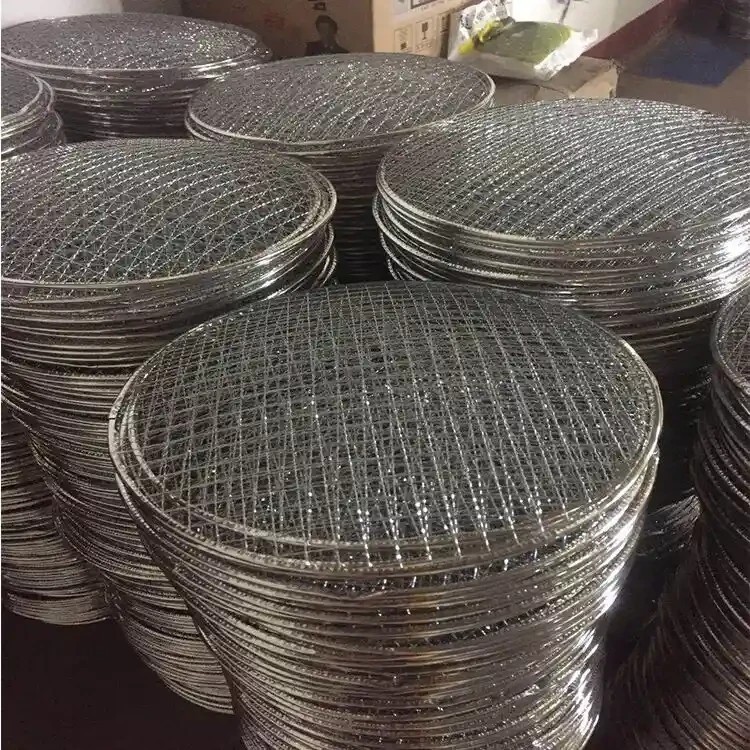Dec . 04, 2024 16:02 Back to list
Innovative Soil Retention Solutions with Durable Mesh Technology for Enhanced Stability
The Importance of Soil Retaining Mesh Enhancing Stability and Sustainability
In the realm of civil engineering and construction, soil retaining mesh has emerged as a vital component for managing soil stability and preventing erosion. This innovative solution provides effective support in various applications, ranging from landscaping to large-scale infrastructure projects. The significance of soil retaining mesh can be attributed to its ability to reinforce soil structures, reduce erosion, and promote sustainable practices.
What is Soil Retaining Mesh?
Soil retaining mesh is a geosynthetic product made from durable materials such as polypropylene or polyester. It is designed to hold back soil on slopes or embankments, preventing soil movement and erosion due to water runoff, wind, or gravity. The mesh acts as a structural support system, maintaining the integrity of the soil while allowing vegetation to grow through it. This dual functionality not only stabilizes the soil but also enhances the aesthetic value of the landscape.
Benefits of Using Soil Retaining Mesh
1. Erosion Control One of the primary benefits of soil retaining mesh is its effectiveness in controlling erosion. By holding the soil in place, it reduces the potential for landslides and sediment displacement. This is particularly crucial in areas with steep slopes or high water runoff, where traditional erosion control methods may prove inadequate.
soil retaining mesh

2. Vegetation Support Unlike rigid retaining walls, soil retaining mesh allows for the growth of plants and vegetation, which play a significant role in anchoring the soil. The roots of these plants help to further stabilize the soil, creating a natural barrier against erosion. This aspect encourages biodiversity and promotes a healthier ecosystem.
3. Cost-Effective Solution Implementing soil retaining mesh can be a more economical solution compared to traditional methods such as concrete retaining walls. The installation process is often simpler, requiring less labor and time. Additionally, the longevity of mesh systems can lead to long-term savings in maintenance and repair costs.
4. Environmental Sustainability In an era where sustainability is key, soil retaining mesh promotes environmentally friendly practices. By allowing natural vegetation to flourish and minimizing soil displacement, it helps maintain the ecological balance. Moreover, it can be used in conjunction with other sustainable practices, such as rain gardens and permeable pavements, to enhance water management.
5. Versatility Soil retaining mesh is versatile and can be used in various applications, including road construction, landscaping, and erosion control along riverbanks and coastlines. Its adaptability makes it suitable for different terrains and climates, presenting a flexible solution for soil stabilization.
Conclusion
As the challenges related to soil erosion and stability become increasingly pronounced due to climate change and urbanization, the need for effective solutions is more crucial than ever. Soil retaining mesh stands out as a reliable and sustainable answer to these challenges. Its multifaceted benefits—ranging from erosion control to aesthetic enhancement—make it an indispensable tool in modern civil engineering. By integrating soil retaining mesh into construction and landscaping projects, we not only ensure the stability of our infrastructure but also contribute to the health of our environment. As we continue to seek innovative solutions for a sustainable future, soil retaining mesh exemplifies how engineering can harmonize with nature.
-
Reinforcing Mesh: Core Material of the Construction Industry
NewsJul.07,2025
-
Welded Wire Fabric Reinvented for Modern Projects
NewsJul.04,2025
-
Superiority of Stainless Steel Woven Mesh
NewsJul.04,2025
-
Key Types of Razor Wire and Their Applications
NewsJul.04,2025
-
Durable Metal Fence Types for Security
NewsJul.04,2025
-
Best Materials for Livestock Fence
NewsJul.04,2025
products.







